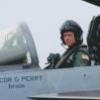Fuel Leaks - Weep No More, Here I Come!
-
Members Online
- Pinecone
- Guy123
- PeteMc
- Lumberg
- Kelpro999
- ta2too
- N201MKTurbo
- 1980Mooney
- Vance Harral
- Jim F
- rob47v
- hammdo
- Deb
- redbaron1982
- Skyland
- BlueSky247
- Rick Junkin
- C.J.
- Rmnpilot
- alextstone
- KSMooniac
- jetdriven
- Ibra
- Fly Boomer
- mooney_flyer
- Tmooney
- MikeOH
- cferr59
- Bolter
- eman1200
- 00-Negative
- Shadrach
- Mac80
- Tom F
- mike_elliott
- kortopates
- Yetti


Recommended Posts
Join the conversation
You can post now and register later. If you have an account, sign in now to post with your account.